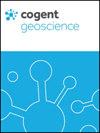Geological application of ASTER remote sensing within sparsely outcropping terrain, Central New South Wales, Australia
引用次数: 14
Abstract
Abstract One of the major problems faced by the application of geological remote sensing is its potential limitation in areas of a temperate climate with agricultural cultivation, limited outcrops and vegetation cover. This was the issue experienced when it was attempted to use the multi-spectral satellite Advanced Spaceborne Thermal Emission Reflectance Radiometer (ASTER) imagery to assist the updating of 1:100,000 geological mapping with the Ardlethan/Barmedman map sheets of central New South Wales (NSW), Australia. Most successful applications of geological remote sensing have been achieved in arid to semi-arid environments where vegetation and cultivation is minimal. Typically, day-time acquired ASTER visible to shortwave surface reflectance derived map products has extracted useful mineral related compositional information in such areas however in the studied areas of central NSW these techniques proved limited, particularly when using large mosaicked products such as the National Australia ASTER Geoscience Maps. Some improvement in geological discrimination was achieved using individual ASTER scenes, masked by high slope angle and processed into spectrally unmixed products. An alternative approach to extracting geoscience related products, utilised, night-time acquired ASTER thermal products. Their surface kinetic temperature products showed some potential for identifying the limited and sparse outcrops useful for field mapping geologists. Overall this study also showed the importance of the image spatial resolution in vegetated and cultivated areas with limited outcrop. Ideally a finer spatial image product than available with ASTER’s VNIR-SWIR combined products at 30 m is required.澳大利亚新南威尔士州中部稀疏地表ASTER遥感的地质应用
地质遥感应用面临的主要问题之一是其在温带气候、农业种植、露头和植被覆盖有限的地区的潜在局限性。这是在尝试使用多光谱卫星先进星载热发射反射辐射计(ASTER)图像协助更新澳大利亚新南威尔士州中部Ardlethan/Barmedman地图集的1:10万地质测绘时遇到的问题。地质遥感最成功的应用是在植被和耕地最少的干旱至半干旱环境中实现的。通常情况下,白天获取的ASTER可见短波表面反射率衍生地图产品已经在这些地区提取了有用的矿物相关成分信息,但是在新南威尔士州中部的研究区域,这些技术被证明是有限的,特别是在使用大型拼接产品(如澳大利亚国家ASTER地球科学地图)时。利用单独的ASTER场景,在高斜坡角掩盖下处理成光谱未混合的产品,在一定程度上提高了地质识别能力。另一种提取地球科学相关产品的方法是利用夜间获得的ASTER热产品。它们的地表动力学温度产物显示出一定的潜力,可用于识别有限和稀疏的露头,对野外测绘地质学家有用。总体而言,本研究还表明,在露头有限的植被和耕地地区,图像空间分辨率的重要性。理想情况下,需要比ASTER的VNIR-SWIR组合产品在30米处提供更精细的空间图像产品。
本文章由计算机程序翻译,如有差异,请以英文原文为准。
求助全文
约1分钟内获得全文
求助全文

 求助内容:
求助内容: 应助结果提醒方式:
应助结果提醒方式:


